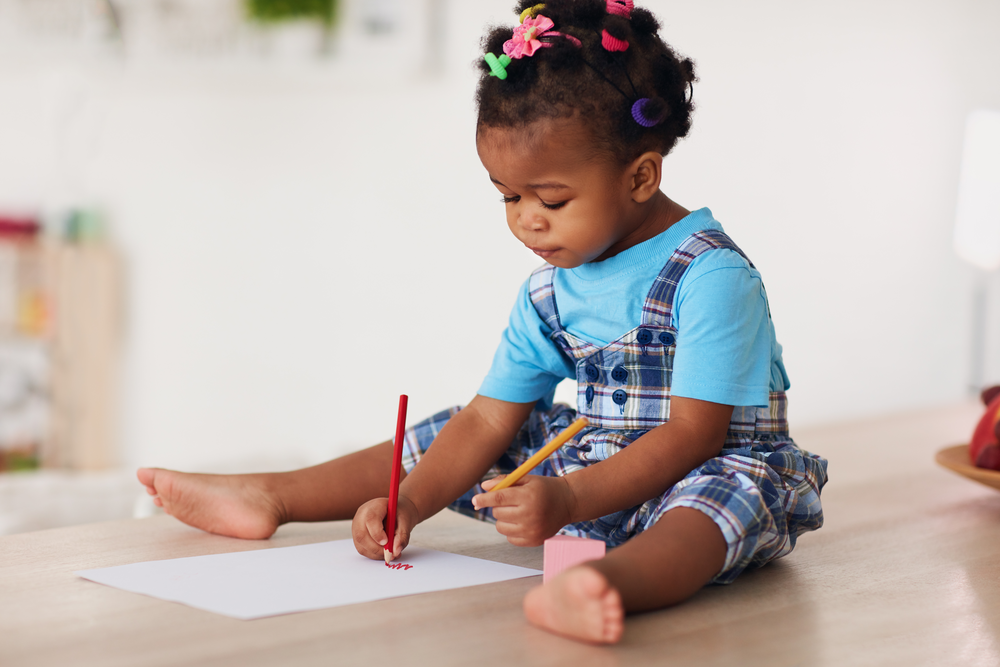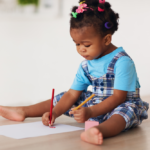Table of Contents
- Understanding Hoarding Disorder in Children: More Than Just Messiness
- Why Do Children Hoard? Unpacking the Underlying Causes
- The Impact of Hoarding Disorder on a Child’s Life
- The Path to Support: How You Can Help Your Child
- Practical Strategies for Managing Hoarding Behaviors in Children
- Working with Schools and the Wider Community
- Long-Term Support and Relapse Prevention
- Conclusion: A Journey of Hope and Healing
Supporting Children with Hoarding Disorder: A Compassionate Guide for Parents and Caregivers
Imagine your child’s room. Is it just a bit messy, a creative chaos typical of childhood? Or does it feel… different? Overwhelmingly full, perhaps, with items spilling from every corner, making it hard to walk, play, or even sleep? If this latter picture resonates, you might be facing something more complex than typical untidiness. It could be a sign of childhood hoarding disorder, a condition that requires understanding, patience, and dedicated support. This isn’t about a ‘naughty’ or ‘lazy’ child; it’s about a genuine mental health challenge that can cause significant distress for both the child and the family.
Navigating the complexities of hoarding disorder in a young person can feel isolating and confusing. But you’re not alone. This article aims to be your compassionate guide, shedding light on what hoarding disorder in children entails, why it happens, and most importantly, how you can provide the crucial support your child needs to navigate this journey towards a healthier, happier life.

Understanding Hoarding Disorder in Children: More Than Just Messiness
It’s easy to dismiss a very cluttered room as a phase or a personality quirk. However, Hoarding Disorder (HD) is a recognized mental health condition with specific diagnostic criteria, even in children and adolescents. Understanding these distinctions is the first step toward effective support.
What is Hoarding Disorder?
According to the Diagnostic and Statistical Manual of Mental Disorders (DSM-5), Hoarding Disorder is characterized by:
- Persistent difficulty discarding or parting with possessions, regardless of their actual value. This isn’t about wanting to keep valuable items; it can be about items that others see as trivial or even trash.
- This difficulty is due to a perceived need to save the items and significant distress associated with discarding them. The thought of letting go can trigger intense anxiety.
- The symptoms result in the accumulation of possessions that congest and clutter active living areas and substantially compromise their intended use. If living areas are uncluttered, it is only because of the interventions of third parties (e.g., family members, cleaners, authorities).
- The hoarding causes clinically significant distress or impairment in social, occupational (or academic for children), or other important areas of functioning (including maintaining a safe environment for self and others).
In children, these symptoms can manifest in their bedrooms, play areas, school lockers, or even backpacks, significantly impacting their daily lives.
Spotting the Signs: Early Clues in Childhood Hoarding
Recognizing pediatric hoarding early can make a significant difference. While not every child who collects things has hoarding disorder, certain patterns may indicate a deeper issue:
- Excessive acquisition: Constantly bringing home free items (flyers, rocks, wrappers) or showing distress if unable to acquire something they want, even if it has no apparent value.
- Difficulty letting go: Becoming extremely upset or anxious at the thought of discarding items, even broken toys, old school papers, or outgrown clothes.
- Strong emotional attachment to objects: Attributing human-like feelings to inanimate objects or believing items hold significant (often unrealistic) future value or sentimental importance.
- Cluttered personal spaces: Bedrooms, desks, or backpacks become so full that they are unusable for their intended purpose. The clutter is often disorganized.
- Saving items ‘just in case’: A pervasive fear that an item might be needed someday, leading to an inability to discard things.
- Shame and secrecy: Children may become secretive about their possessions or avoid having friends over due to embarrassment about the clutter.
- Difficulty with organization and categorization: They may struggle to decide what to keep or where things belong.
Collecting vs. Hoarding: Knowing the Difference
Many children are natural collectors. They might gather stamps, Pokémon cards, rocks, or action figures. So, how do you distinguish a healthy hobby from a potential disorder?
- Organization: Collectors usually organize, categorize, and display their collections with pride. Hoarded items are typically disorganized, piled up, and make spaces unusable.
- Selectivity: Collectors are selective about what they add to their collection. Hoarding often involves indiscriminate accumulation of items, many of which have no objective value.
- Emotional Response: Collectors feel joy and pride from their hobby. While children with hoarding tendencies may feel temporary comfort from acquiring items, they experience significant distress when faced with discarding them, and the clutter itself can cause anxiety and shame.
- Social Aspect: Collecting can be a social activity, with children sharing their interests with friends. Hoarding often leads to social isolation due to embarrassment or the inability to use social spaces.
- Functional Impairment: Collecting rarely interferes with daily life. Hoarding, by definition, causes significant impairment in functioning – at home, school, or socially.
If your child’s ‘collecting’ seems to cross these lines into distress and dysfunction, it’s worth exploring further.
Why Do Children Hoard? Unpacking the Underlying Causes
There isn’t a single cause for childhood hoarding disorder. It’s often a complex interplay of various factors. Understanding these can foster empathy and guide support strategies.
The Role of Genetics and Family History
Research suggests a strong genetic component to hoarding disorder. Children with a family history of hoarding (parents, grandparents, aunts/uncles) are at a higher risk of developing the disorder themselves. This doesn’t mean it’s inevitable, but it is a significant predisposing factor.
Co-occurring Conditions: Anxiety, OCD, ADHD, and Autism Spectrum Disorder
Hoarding disorder frequently co-occurs with other mental health conditions in children:
- Anxiety Disorders: Generalized anxiety, social anxiety, or specific phobias can fuel hoarding behaviors as a way to cope with overwhelming feelings. Possessions might provide a false sense of security.
- Obsessive-Compulsive Disorder (OCD): While hoarding disorder is now classified separately from OCD, there are overlaps. Some children with OCD might hoard due to obsessive thoughts about needing items or compulsive acquiring behaviors.
- Attention-Deficit/Hyperactivity Disorder (ADHD): Difficulties with executive functions like organization, decision-making, and sustained attention, common in ADHD, can contribute to clutter and make it harder to manage possessions.
- Autism Spectrum Disorder (ASD): Children with ASD may have intense interests, strong attachments to objects, and difficulties with change or letting go, which can sometimes manifest as hoarding behaviors. Sensory sensitivities might also play a role in what they acquire or keep.
Trauma and Stressful Life Events
Experiencing trauma, loss, or significant stressful life events (e.g., parental divorce, death of a loved one, bullying, frequent moves) can sometimes trigger or exacerbate hoarding behaviors. Possessions might become a source of comfort, a way to feel in control, or a tangible link to a past they don’t want to lose. The act of acquiring can be a coping mechanism to soothe emotional pain.
Emotional Regulation Difficulties
Children who struggle to understand, manage, or express their emotions may turn to hoarding. The items can serve as a distraction from unpleasant feelings or provide a temporary sense of comfort or security. The thought of discarding items can trigger intense negative emotions they feel ill-equipped to handle.
Information Processing Deficits
Some research indicates that individuals with hoarding disorder, including children, may have difficulties with certain cognitive processes:
- Categorization: Trouble grouping similar items or deciding what belongs where.
- Decision-making: Overwhelmed by choices, especially regarding what to keep or discard.
- Memory: Over-reliance on physical objects as memory cues.
- Attention: Easily distracted, making sorting tasks difficult.

The Impact of Hoarding Disorder on a Child’s Life
The consequences of untreated childhood hoarding disorder can be far-reaching, affecting various aspects of a child’s development and well-being.
Emotional and Psychological Toll
Children with hoarding disorder often experience a whirlwind of negative emotions:
- Anxiety: Constant worry about their possessions, fear of losing them, and anxiety related to the clutter itself.
- Shame and Guilt: They may feel embarrassed by their living conditions and guilty about the impact on their family.
- Low Self-Esteem: Feeling different, misunderstood, or ‘broken’ can severely damage a child’s self-worth.
- Frustration and Confusion: Not understanding why they can’t let go of things can be deeply frustrating.
Social Challenges
Hoarding can lead to significant social difficulties:
- Isolation: Children may avoid inviting friends over due to shame about the clutter, leading to loneliness.
- Bullying: If peers become aware of the hoarding, the child might face teasing or bullying.
- Difficulty Making Friends: Social skills may not develop typically if they are consistently isolated.
Academic Struggles
The disorganization and cognitive challenges associated with hoarding can spill over into school life:
- Difficulty Concentrating: A cluttered mind often accompanies a cluttered space.
- Lost Assignments and Materials: Important papers, books, or supplies can easily get lost in the hoard.
- Problems with Time Management and Organization: These are essential skills for academic success that may be impaired.
Family Strain and Conflict
Hoarding disorder in a child inevitably affects the entire family dynamic:
- Increased Arguments: Frustration over clutter can lead to frequent conflicts between the child, parents, and siblings.
- Parental Stress and Worry: Parents often feel overwhelmed, helpless, and anxious about their child’s well-being and future.
- Reduced Family Space and Activities: Clutter can limit shared living spaces and family activities.
Health and Safety Risks
In severe cases, hoarding can pose tangible health and safety risks:
- Pests and Mold: Accumulated items can attract pests or develop mold, leading to respiratory problems or allergies.
- Fire Hazards: Piles of flammable materials increase the risk of fire and can block escape routes.
- Tripping Hazards: Clutter can make it difficult to move around safely.
- Hygiene Issues: Difficulty accessing bathrooms or kitchens for proper cleaning can lead to unsanitary conditions.
The Path to Support: How You Can Help Your Child
Supporting a child with hoarding disorder is a journey that requires immense patience, empathy, and a multi-faceted approach. Here’s how you can begin to provide the child hoarding help they need.
Step 1: Fostering Understanding and Empathy (The Foundation)
This is arguably the most crucial step. Your child needs to feel understood, not judged or shamed.
- Validate their feelings: Acknowledge that their attachment to items is real for them, even if you don’t understand it. Say things like, ‘I see this is really hard for you,’ or ‘I understand you’re worried about letting this go.’
- Avoid judgment, criticism, and forced cleanouts: Lecturing, nagging, or forcibly throwing away their possessions will likely backfire, increasing their anxiety and damaging your relationship. Forced cleanouts can be traumatic and often lead to the child hoarding more intensely and secretly.
- Listen actively: Try to understand the reasons behind their attachment to certain items. What fears or beliefs are driving the behavior?
- Educate yourself: Learning more about hoarding disorder will help you approach the situation with more compassion and effective strategies.
Step 2: Seeking Professional Guidance
Hoarding disorder is a complex condition that often requires professional intervention. Don’t hesitate to seek help from:
- Pediatricians: Your child’s doctor can conduct an initial assessment and refer you to specialized mental health professionals.
- Child Psychologists or Psychiatrists: Look for professionals experienced in treating hoarding disorder, OCD, or anxiety disorders in children.
- Therapists specializing in Cognitive Behavioral Therapy (CBT): CBT is considered the gold-standard treatment for hoarding disorder. It helps children understand their thoughts and feelings about possessions, develop healthier coping mechanisms, and gradually change their behaviors.
- Exposure and Response Prevention (ERP): A component of CBT, ERP involves gradually exposing the child to the anxiety of not acquiring items or discarding them, while preventing them from engaging in their usual compulsive hoarding behaviors.
- Family Therapy: This can be incredibly beneficial to address family dynamics, improve communication, and ensure everyone is on the same page with support strategies.
- Play Therapy or Art Therapy: For younger children, these modalities can help them express their feelings and work through anxieties related to possessions in a non-threatening way.
Step 3: Creating a Supportive Home Environment
Your home environment plays a vital role in your child’s recovery journey.
- Establish clear, consistent, and clutter-free zones: Start with shared family spaces like the kitchen or living room. Explain why these areas need to be functional for everyone.
- Set realistic expectations and goals collaboratively: Involve your child (age-appropriately) in setting small, achievable goals for decluttering and organizing. Avoid overwhelming them with massive tasks.
- Patience and consistency are key: Progress will likely be slow, with ups and downs. Maintain a consistent, supportive approach. Celebrate small victories.
- Model healthy behaviors: Children learn by watching. If you manage your own possessions thoughtfully and keep your spaces organized, it sets a positive example.

Practical Strategies for Managing Hoarding Behaviors in Children
Alongside professional help, there are many practical strategies you can implement at home to help your child manage their hoarding behaviors. Remember to introduce these gently and with their cooperation.
Teaching Decision-Making and Categorization Skills
Many children with hoarding tendencies struggle with making decisions about what to keep. You can help by:
- Using simple categories: Start with basic categories like ‘Keep,’ ‘Donate/Recycle,’ and ‘Trash.’ For ‘Keep’ items, discuss where they will live.
- Starting small and non-sentimental: Begin with a small area or a category of items that holds less emotional attachment (e.g., old school papers, broken crayons).
- The ‘One-Minute Rule’: If a decision about an item can be made in under a minute (e.g., obvious trash), deal with it immediately.
- Practicing sorting: Use games or activities to practice sorting objects by different criteria (color, size, type, usefulness).
- Asking guiding questions: Instead of saying ‘Throw this out,’ ask, ‘When was the last time you used this?’ or ‘Do you have another one like this that works better?’
Developing Organizational Skills
Learning to organize is a life skill that can be particularly challenging for children prone to hoarding.
- Breaking down tasks: Large organizing tasks are overwhelming. Break them into small, manageable steps (e.g., ‘Let’s clear off one shelf today’).
- Using visual aids: Labels, color-coded bins, and checklists can make organization more concrete and easier to follow.
- Establishing routines: Set aside short, regular times for ‘tidy-up’ or ‘put-away’ sessions. 5-10 minutes daily can be more effective than infrequent long sessions.
- Making it fun: Turn organizing into a game, play music, or offer small, non-material rewards for effort and progress.
- A ‘home’ for everything: Teach the concept that everything has a designated place where it belongs when not in use.
Managing Sentimental Attachments
This is often the hardest part. Children may attach deep meaning to seemingly insignificant items.
- Taking photos of items: If an item must be discarded but holds memories, offer to take a photo of it that can be kept in a scrapbook or digital album.
- Creating a ‘memory box’: Allow your child one special, reasonably sized box for truly sentimental items that don’t have a practical use but are hard to part with. This acknowledges their feelings while still setting limits.
- Discussing the meaning behind items: Gently explore why an item is special. Sometimes talking about it can help process the emotion and make letting go a bit easier. Reassure them that memories are not solely held within objects.
Addressing Acquisition: Limiting New Items
Helping your child reduce the influx of new items is as important as decluttering existing ones.
- The ‘One In, One Out’ rule: For certain categories of items (e.g., toys, clothes), encourage the idea that if something new comes in, something old must go out.
- Discussing needs vs. wants: Help your child differentiate between things they truly need and things they simply want.
- Teaching mindful consumption: Before acquiring a new item (even free ones), encourage them to pause and think: ‘Do I really need this? Where will it live? Do I have something similar already?’
- Setting limits on collecting free items: Agree on rules for things like party favors, flyers, or found objects.
Coping with Distress and Resisting Urges
The urge to acquire or the distress of discarding can be powerful. Teach coping skills:
- Relaxation techniques: Deep breathing exercises, mindfulness practices, or progressive muscle relaxation can help manage anxiety.
- Distraction strategies: When feeling an urge to acquire or distress about discarding, encourage engaging in a preferred activity (playing a game, reading, going outside).
- Delaying gratification: If they want to acquire something, suggest waiting a day or two. The urge might pass.
- Challenging unhelpful thoughts: Work with them (and their therapist) to identify and challenge thoughts like ‘I might need this someday’ or ‘If I throw this out, something bad will happen.’
Working with Schools and the Wider Community
Support shouldn’t be limited to the home environment. Collaboration can make a big difference.
Communicating with Teachers and School Counselors
If hoarding behaviors affect your child’s school life (e.g., messy desk, lost homework, difficulty with organization), inform their teacher and school counselor. They can be valuable allies in providing consistent support and understanding. Explain the nature of hoarding disorder and how it differs from simple messiness or defiance.
Developing an Individualized Education Plan (IEP) or 504 Plan
If hoarding disorder significantly impacts your child’s ability to learn or participate in school, they may be eligible for an IEP or a 504 plan. These plans can provide accommodations such as:
- Extra time for assignments.
- Help with organization (e.g., checklist, regular desk clean-outs with support).
- A quiet space for work.
- Preferential seating.
- Support from a school counselor or psychologist.
Building a Support Network
Connect with other parents who may be facing similar challenges. Online forums or local support groups (if available) can provide emotional support and practical advice. Knowing you’re not alone can be incredibly empowering.
Long-Term Support and Relapse Prevention
Managing hoarding disorder is often a long-term process, not a quick fix. Ongoing support and strategies for relapse prevention are crucial.
Recognizing Triggers and Early Warning Signs of Relapse
Work with your child and their therapist to identify situations, emotions, or events that might trigger an increase in hoarding behaviors. Early warning signs could include increased acquiring, greater difficulty discarding, or growing clutter in specific areas. Having a plan for when these signs appear is important.
Maintaining Open Communication
Keep the lines of communication open with your child. Encourage them to talk about their feelings, anxieties, and challenges without fear of judgment. Regular check-ins can help address issues before they escalate.
Celebrating Progress, Not Perfection
Focus on the effort and progress your child makes, no matter how small. Perfection is an unrealistic goal and can lead to frustration. Acknowledge their hard work and resilience. Positive reinforcement is a powerful motivator.
Self-Care for Parents and Caregivers
Supporting a child with hoarding disorder can be emotionally and physically draining. It’s vital to take care of your own well-being. Seek support for yourself, whether through therapy, support groups, friends, or family. You cannot pour from an empty cup. Taking breaks, engaging in hobbies, and managing your own stress will make you a more effective and patient support for your child.

Conclusion: A Journey of Hope and Healing
Supporting a child with hoarding disorder is undoubtedly challenging, but it is also a journey filled with opportunities for growth, understanding, and deeper connection. Remember that your child is not defined by their hoarding behaviors. They are a young person struggling with a complex condition who needs your unwavering love, patience, and guidance.
By fostering an environment of empathy, seeking appropriate professional child hoarding help, implementing practical strategies with consistency, and advocating for their needs, you can empower your child to manage their symptoms and build a life that is not dictated by possessions. The path may be long, and there will be setbacks, but with persistent support and the right tools, children with hoarding disorder can make significant progress and lead fulfilling lives. Your role as a parent or caregiver is pivotal in this process, offering a beacon of hope and a steady hand to hold along the way.









